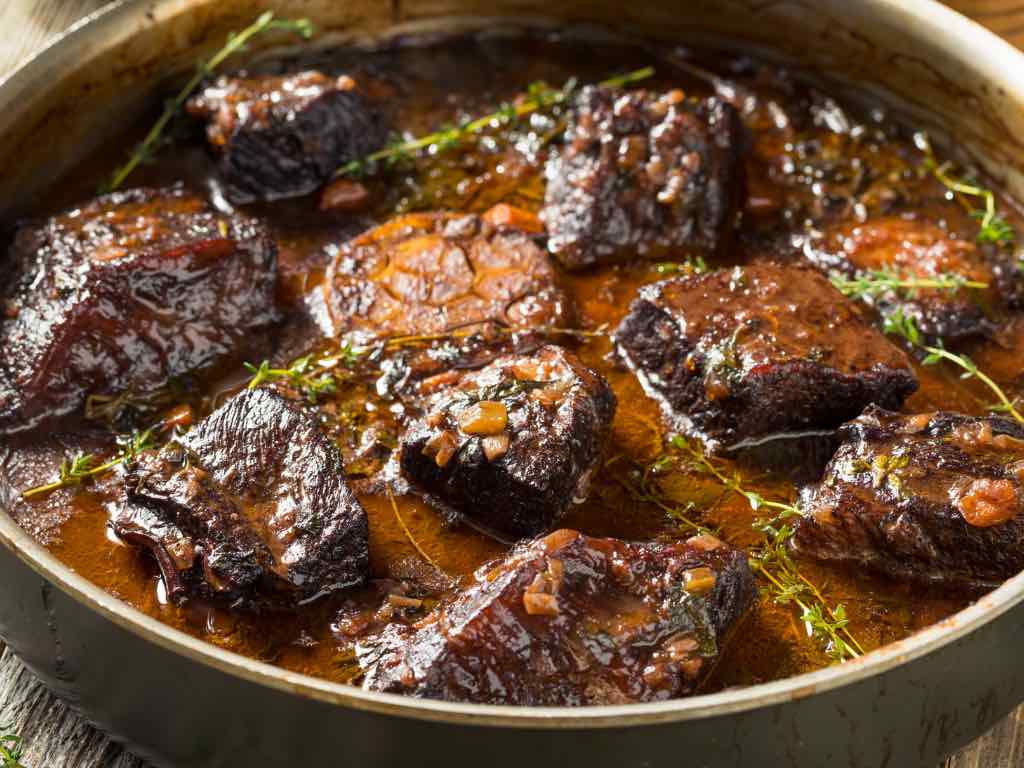
Wagyu Stew Ribs: The Ultimate Comfort Food Experience
|
|
Time to read 5 min
Welcome to One Stop Halal!
Written by: Samir P.
|
|
Time to read 5 min
Wagyu beef, renowned for its exquisite marbling and unparalleled flavor, has long been associated with high-end dining experiences. The rich, buttery texture and deep umami of Wagyu make it a prized ingredient in dishes like steaks and sushi. However, a lesser-known, equally luxurious way to enjoy this delicacy is Wagyu stew ribs. This dish combines the tenderness of slow-cooked ribs with the intense flavors of Wagyu beef, creating a stew that is both comforting and indulgent. In this blog, we will explore the art of preparing Wagyu stew ribs, from selecting the proper cut to perfecting the cooking process.
Before diving into the recipe, it's essential to understand what makes Wagyu beef so special. Wagyu, meaning "Japanese cow," refers to four specific breeds of cattle native to Japan. The most famous of these is the Kuroge Washu breed, known for its high intramuscular fat or marbling levels. This marbling is the key to Wagyu's distinctive flavor and texture.
The fat in Wagyu beef melts at a lower temperature than other types of beef, giving it a tender and juicy melt-in-your-mouth quality. Additionally, the fat is rich in monounsaturated fatty acids, contributing to its health benefits compared to other types of beef. This combination of flavor, texture, and health benefits has made Wagyu one of the most sought-after types of beef in the world.
When it comes to making Wagyu stew ribs, selecting the right cut is crucial. While Wagyu steaks are often the star of the show, the rib cuts are where the real magic happens in a stew. For this dish, you'll want to look for short ribs, which come from the lower portion of the cow's ribcage.
Wagyu short ribs are ideal for stewing because they perfectly balance meat and fat. The marbling in Wagyu beef ensures the meat remains tender and flavorful even after extended cooking. The fat in the short ribs melts slowly during cooking, infusing the stew with rich, beefy flavors that elevate the dish to a new level of indulgence.
The beauty of Wagyu stew ribs lies in its simplicity. While the meat is undoubtedly the star of the show, the supporting ingredients play a crucial role in enhancing the dish's overall flavor. Here's what you'll need:
Wagyu stew ribs are rich and hearty, making them perfect for pairing with equally robust accompaniments. Here are a few suggestions to complete your meal:
A loaf of crusty artisan bread is perfect for soaking up the rich broth. The contrast between the soft, tender meat and the crunchy bread is a delight for the senses.
A light, refreshing green salad with a tangy vinaigrette can help balance the stew's richness. Consider using arugula, spinach, or mixed greens with a lemon or balsamic dressing.
For an extra layer of comfort, serve the stew over creamy polenta. The smooth, buttery texture of the polenta pairs beautifully with the tender ribs and savory broth.
Welcome to the Home of the Halal Beef. We carry various beef cuts that are hard to find elsewhere. We deliver to your doorstep anywhere in the United States within 1-2 business days.
Wagyu stew ribs are a true celebration of comfort food, elevated by the luxurious quality of Wagyu beef. This dish is perfect for a cozy weekend dinner, a special occasion, or any time you want to treat yourself and your loved ones to something extraordinary. The combination of tender, melt-in-your-mouth ribs, hearty vegetables, and a rich, flavorful broth makes this stew an unforgettable experience. Whether you're a seasoned cook or a beginner in the kitchen, this recipe will guide you through creating a dish that will impress you. So, roll up your sleeves, gather your ingredients, and prepare to indulge in the ultimate comfort food: Wagyu stew ribs.

© 2025 One Stop Halal, Inc.